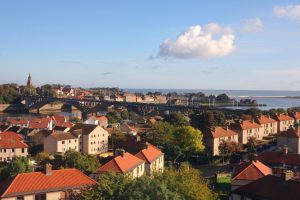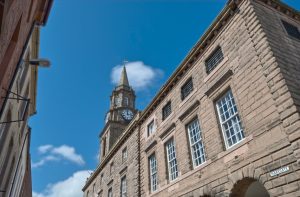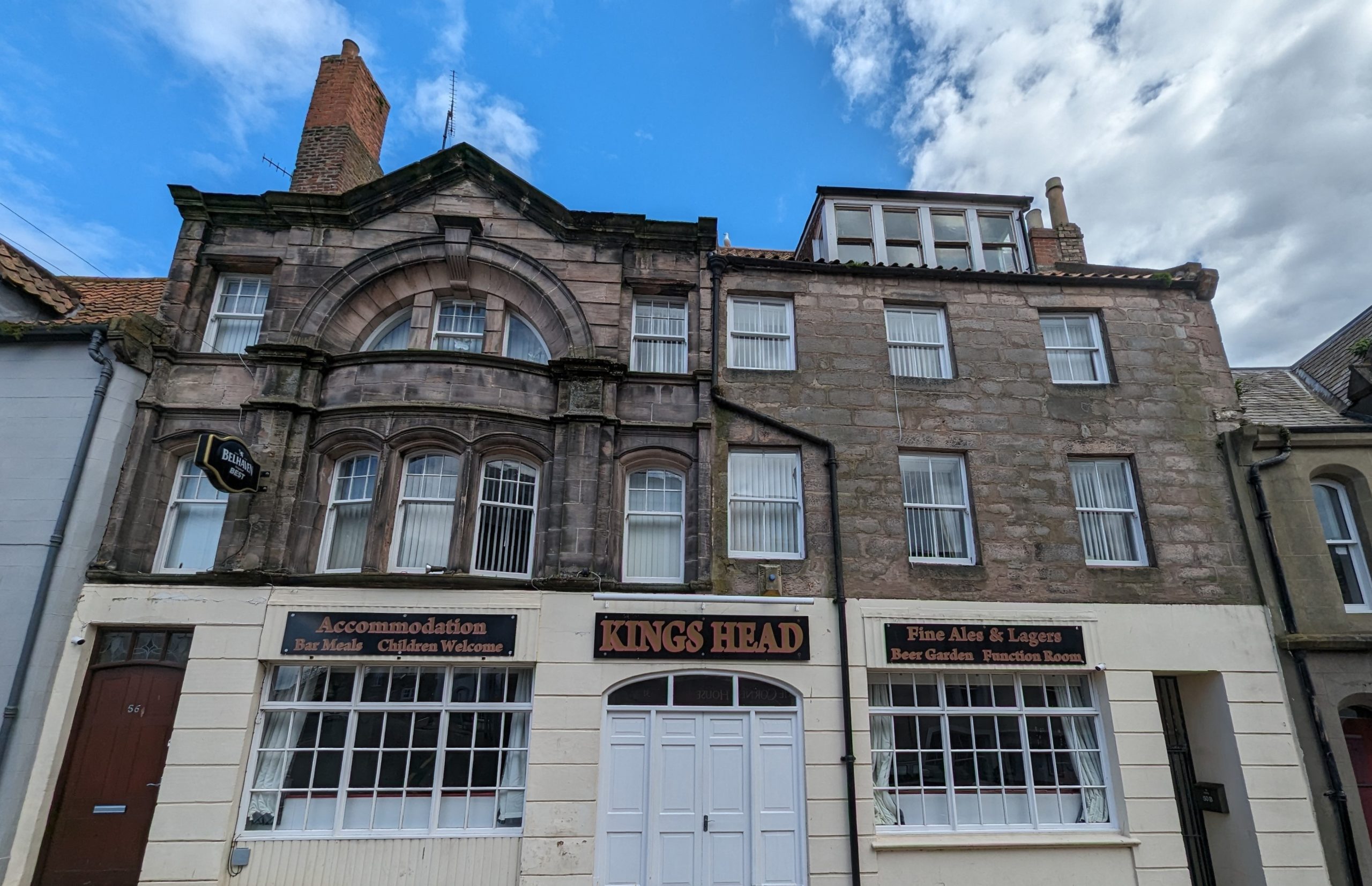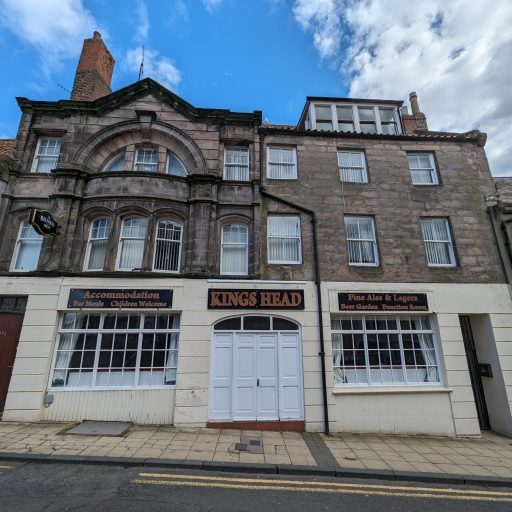Berwick-upon-Tweed

The northern English town of Berwick upon Tweed, overlooking the North Sea in Northumberland.
Berwick-upon-Tweed is a town in the county of Northumberland and is the northernmost town in England, on the east coast at the mouth of the River Tweed. It is situated 2.5 miles (4 km) south of the Scottish border.
Berwick-Upon-Tweed, the former county town of Berwickshire, had a population of 11,665 at the time of the United Kingdom Census 2001. A civil parish and town council were created in 2008.
Founded during the time of the kingdom of Northumbria, which was part of the Heptarchy, the area was central to historic border war between the Kingdoms of England and Scotland for centuries; the last time it changed hands was when England reconquered it in 1482. Berwick remains a traditional market town and it also boasts some notable architectural features, in particular its defence ramparts and barrack buildings.
The origin of the town's name is of Norse, or Old English, with the second element "wick" either coming from "vik" meaning a bay, or a "wic" meaning a settlement. The first element is also ambiguous, and may refer to either barley (baer) or the headland ("bar") which cuts across the Tweed estuary. Another interpretation claims "Corn Farm" as the meaning of Berwick.
Berwick was referred to as 'South Berwick' by the Scots, to differentiate it from the town of North Berwick, in East Lothian, east of Edinburgh.
In the post-Roman period, the area may have been inhabited by the Brythons of Bryneich, who were in turn conquered by the Angles, who created the kingdom of Bernicia, which united with the Kingdom of Deira to form Northumbria.
In either 973 or 1018 Northumbria north of the Tweed (known as Lothian) was ceded to Scotland. In 1018 the Scots defeated the Northumbrians at the Battle of Carham, which occurred across the River Tweed opposite Coldstream to secure possession of Lothian.
Berwick station stands on the site of a historic medieval castle, where Robert Bruce's claim was originally declined, and John Balliol's accepted.
Berwick's strategic position on the English-Scottish border during centuries of war between the two nations and its relatively great wealth led to a succession of raids, sieges and take-overs. Between 1147 and 1482 the town changed hands between England and Scotland more than 13 times, and was the location of a number of momentous events in the English-Scottish border wars. One of the most brutal sackings was by King Edward I of England in 1296, and set the precedent for bitter border conflict in the Scottish Wars of Independence.
In the 13th century Berwick was one of the most wealthy trading ports in Scotland, providing an annual customs value of £2,190, equivalent to a quarter of all customs revenues received north of the border. A contemporary description of the town asserted that "so populous and of such commercial importance that it might rightly be called another Alexandria, whose riches were the sea and the water its walls." Amongst the town's exports were wool, grain and salmon, while merchants from Germany and the Low Countries set up businesses in the town in order to trade.

Berwick upon Tweed Town Hall.

